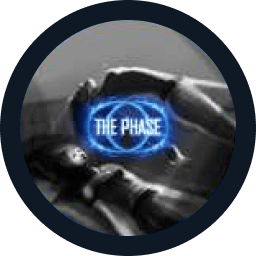Sleep paralysis is a condition where a person cannot move for a short time that occurs when falling asleep or waking up. In addition to muscle paralysis, this condition sometimes includes other symptoms:
- Hallucinations
- Difficulty breathing
- Ringing in the ears
- Panic attacks
Therefore, anyone who has experienced it even once may wonder how to get rid of sleep paralysis forever. Modern science refers to this phenomenon as “sleep onset and awakening cataplexy,” and it is diagnosed based on the patient’s complaints and using polysomnography.
Sleep Paralysis and Lucid Dreams
According to statistics, every third person who experiences their first lucid dream gets scared. As a result, their consciousness returns to the body. Sometimes, upon returning, the person encounters sleep paralysis. It’s important to understand this phenomenon and how to respond to it.
Experienced practitioners know how to stop sleep paralysis and quickly transition to wakefulness. They can regain control over their body in just a few moments. Often, they don’t even experience paralysis because they transition into their physical bodies naturally, as if they just woke up. They don’t even need to open their eyes or move their arms or legs.
When exiting lucid dreams, it’s enough to simply think about your body or the need to wake up, and you will awaken in the real world without experiencing stupor or other types of discomfort.
However, even experienced practitioners sometimes face disruptions during the transition (awakening). Instead of waking up, they experience sleep paralysis. In this state, they cannot:
- Move
- Call for help
- Move their head (though eye movements are preserved)
- Hear or see clearly
- Breathe deeply, especially if they’re lying on their back
- Open their eyelids (though this is rare)
Despite these limitations, consciousness remains. The person perceives and understands everything.
After experiencing this state once, people begin wondering how to get rid of sleep paralysis. From a scientific standpoint, sleep paralysis arises only when you exit the REM phase too abruptly. At that moment, you might have been experiencing a lucid dream, or you may have simply been sleeping without developing specific skills. The body starts to act asynchronously. On the one hand, the consciousness has already awakened; the brain is working in wakefulness mode. On the other hand, the body hasn’t realized this yet and continues to sleep.
People often use the wrong tactics to get rid of sleep paralysis when they wake up in this state. They try to be proactive, as they are accustomed to doing in other situations. But in this case, the ideal solution is simply to allow your body to awaken. The less you panic or move, the faster this happens. Practice shows that when you try to be active—when you attempt to move even a fingertip or shout—you drive yourself into an even deeper state of atonia.
How to Get Out of Sleep Paralysis – Proven Techniques
If you experience all or some of the symptoms that characterize sleep paralysis, the first thing you should do is return your emotional state to normal. Do not panic—this will only make things worse. Below, are some proven techniques that will help you.
Complete Relaxation
People are accustomed to thinking that activity and movement are the foundations of a successful life. They apply this mindset to everything, including lucid dreams and everything associated with them. If you’ve started developing lucid dreaming skills, you need to abandon all activity and be the epitome of calmness and composure. Any exit from the phase requires complete relaxation. To achieve this state of relaxation, you can:
- Recite a prayer
- Chant a mantra
- Recall a short nursery rhyme
- Concentrate on something
From time to time, you can try to move your little finger or thumb to check if you’ve come out of the stupor.
Concentration on a Finger
This technique is not the most effective, but it is the simplest to perform and easiest to understand. The idea is that you need to act actively to get out of the stupor. Everyone thinks they must do something to solve a problem, and complete relaxation can feel illogical. Therefore, concentrating on moving one finger can help. The drawback of this technique is that the movements might be phantom movements. You might feel like you’ve come out of the stupor, but in reality, you’re still in it.
Concentration on Possible Movements
Sleep paralysis does not cause complete muscle atrophy. Some bodily functions are preserved including:
- Breathing
- Eye movements
- Tongue movements
Therefore, you can concentrate on these actions to distract your consciousness. Usually, one deep breath is enough, but you should track the entire path of the air. Start with an inhalation, feel how the air enters your lungs, lingers there, and then exits. Alternatively, you can run your tongue along the roof of your mouth, focusing on the sensations, and concentrating all your attention on them.
Re-evaluating the Situation
If you’ve started practicing lucid dreaming but encounter sleep paralysis, you can re-evaluate the situation. For example, something may have scared you in the lucid dream, causing you to wake up abruptly. But now you find yourself in a stupor and can’t move. In this case, you should not think about how to remove sleep paralysis but should try to return to the lucid dream. Regardless of why you left the lucid dream, sleep paralysis is the best way to return and immerse yourself in the dream you were aiming for. But now you won’t be frightened and will be able to see the dream through to the end.
Conclusion
Understanding how to correctly get out of sleep paralysis is useful for beginners and experienced practitioners alike. According to statistics, such a state has been experienced by about a third of the population. Therefore, even if you’re not interested in lucid dreaming techniques, it’s essential to familiarize yourself with the methods for exiting the stupor to avoid mistakes and prevent panic. This is especially important for students and people with irregular schedules or stressful jobs.
Best Books About Lucid Dreaming
Recommended reading
Sleep paralysis – What is it and how does it manifest itself?
Sleep Paralysis – How to Induce Step-by-Step with Indirect Techniques
Sleep Paralysis: What is it and how to stop it – Best explanation on the internet









